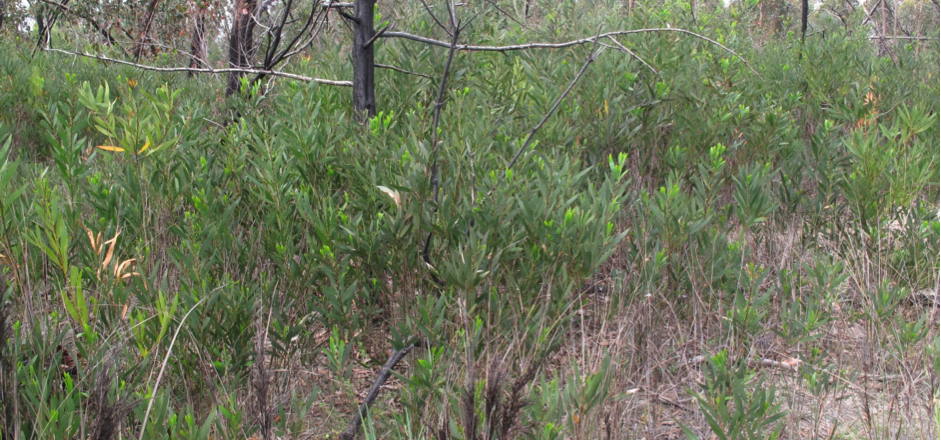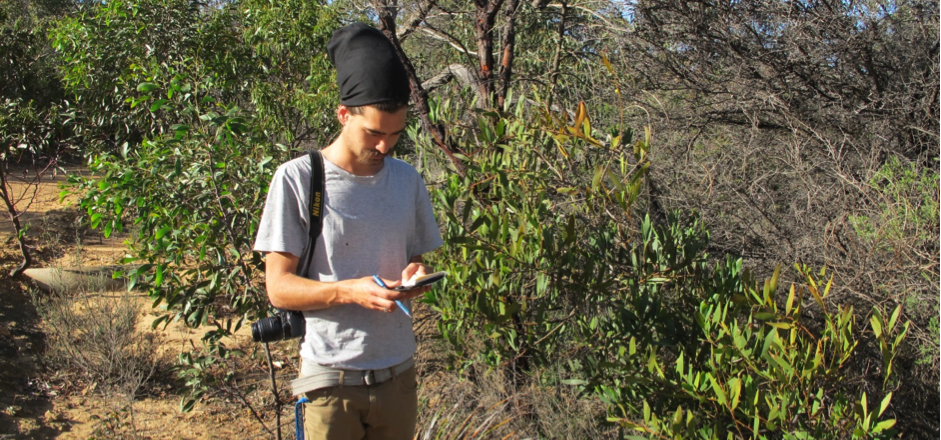Biological control of sallow wattle in the Grampians National Park
Project supported by Monash University and Parks Victoria under the Research Partners Panel
Despite being native to Australia, the sallow wattle, Acacia longifolia, has become an environmental weed outside of its home range and is negatively impacting native ecosystems. Of particular concern are areas in which sallow wattle seeds have accumulated in the seed bank and that experience bushfires, such as in the Grampians National Park. This is because seed germination in this species is triggered by heat. Under these conditions the spread of sallow wattle can be particularly fierce (photo 1).
One effective method for controlling sallow wattle invasions is the naturally occurring Pteromalid wasp, Trichilogaster acacialongifolia (Hymenoptera). By laying its eggs inside sallow wattle flower buds, this native gall wasp can drastically reduce seed production of is Acacia host. In collaboration with Parks Victoria, the McGeoch lab is determining the potential contribution of this wasp to mitigate the sallow wattle invasion in the Grampians National Park. Preliminary fieldtrips conducted by Marie, Melodie and Bernard are determining the distribution of sallow wattles with gall wasps within the Park. This November, Bernard and Zoe went to the Grampians to collect galls (photo 2) and are waiting with anticipation for wasps to emerge.



